by Haley Worley | Aug 30, 2013

It is always a little bit difficult starting something new in a new place with new people. In 4-H we want to create a safe environment where all youth and volunteers can speak their mind, share ideas, and work together as a team. That is why we try our best to make anyone and everyone always feel welcome.
Teambuilding is a major part of 4-H and a very important one too. In order for youth to grow and expand they must be able to work together and accomplish tasks as a team. This also helps them feel accepted, wanted, and confident in the role they play as part of their club or team.
The new 4-H year is upon us, and I felt it was a good idea to share some great icebreakers and get to know you activities, so as we have new members join our 4-H programs all over the district we can reference some great resources from our toolbox to get everyone acquainted.
Listed below are the icebreaker activities I have included with directions and links to pdf’s so you can print.
- Two Truths and a Lie
- Purpose: Teambuilding/Icebreaker
- Groups of: 4-20 (split groups larger than 20 into smaller groups)
- Age Range: 9 and above
- Procedures: Everyone is given a card or piece of paper on which they are instructed to write two truths and a lie about themselves. After they have done this, each participant takes their turn reading aloud their three statements about themselves and the group must guess which they think is the lie.
- TIPS: As they are writing them, encourage them to find unique and possibly strange things about themselves that are true, so that it will be harder for people to guess. You can also prepare them for this by letting them know a day early what will be asked of them so they can take some time to think up some good stuff.
- Icebreaker 1
- Ball Toss
- This activity can be high energy, but with a large group ends up being more about focus and group problem-solving.
- Directions 1. Ask group to form a circle
- 2. Explain that you will toss the ball to one person and they must say their name. They will then toss it to a new person and they must say their name, but everyone must remember who threw it to them and who they threw it to and their name. This will create a pattern which will include everyone in the circle. Everyone must get the ball once (but only once), until the ball ends up with the person who started it.
- 3. Rules: If the ball is ever dropped, it immediately starts over. Also, you may not toss to the person immediately next to you.
- 4. Note to facilitator: When the ball is dropped, encourage the group by saying its okay. Help them support each other. After a few drops, before starting over again, pause the activity and ask the group to problem-solve: ‘What can we do as a group to help us succeed?’
- 5. Sometimes, it will take a group very long (10-15 minutes) just to get it around one time. If that’s the case, you may celebrate and be done. If the group is able to complete this in a relatively short period of time (a few minutes), start them over, but let them know that you will be adding a second ball, which will follow the same pattern. Plus, if any ball is dropped, all balls must start over. If the group is expert, you can then add in a third, fourth, or even fifth ball. When you’ve reached a level of high challenge, let them know that if they succeed here they will have finished the task at its highest level of difficulty.
- Icebreaker 2
- Name Association
- Items Needed: None
- Each person sits in a circle and thinks of one thing (food, animal, etc.) that starts with the same letter as their name. Then the children can introduce themselves: “I am _______, and I like ________.” The next person repeats what the first child said and then adds his/her own.
- example – child 1: My name is Alex and I like apples; child 2: Alex likes apples. My name is Jara and I like junk food; child 3: Alex likes apples. Jara likes junk food. My name is Carlos and I like carrots; continue around circle until everyone has had a turn.
- Icebreaker 3
- Find the Guest
- Items Needed: Sticky-type Name Tags, Marker, 3×5 cards, Pens or Pencils
- Place another person’s name tag on the back of each person in the group.
- Do not tell the person whose name is on their back. Give each person a 3×5 card and a pen or pencil and instruct group members to find out from others as much as they can about the person whose name is on their back and write the information on the card.
- While gathering information, he/she tries to guess whose name is on his/her own back.
- At the end of a set time limit, have the group gather together and allow each person a chance to guess whose name they had on their back.
- After finding out whose name was on his/her back, have each person introduce the person whose name they had on their back by using the information gathered on their card.
- Icebreaker 4
I hope you find these activities beneficial and helpful for your new 4-H year. If you have any questions about 4-H or being involved in your local county programs contact your local Extension Office for more details.
Thank you to http://4hvolunteercafe.wordpress.com/ice-breakers-energizers/ and http://utah4-h.org/htm/resource-library/resource-materials/by=category/category=300 for the icebreakers and directions. These two websites also have many more to choose from, so I urge you to take a look.
by Whitney Cherry | Aug 19, 2013
This is our final countdown post! I’m sure many of you who have been long-time 4-H supporters have seen this video before, but it pumps me up every time I see it! Enjoy!
http://www.youtube.com/watch?v=WC90-fGzGuo&noredirect=1

Join us TONIGHT, Monday, August 19, 2013 at 6:00 PM Central for the first session of Make a Difference Mondays, where you can learn how to make positive differences in the lives of youth just like this!
Contact your local extension office for more information or go to: https://nwdistrict.ifas.ufl.edu/4hn/make-a-difference-mondays/
by Suzanne Wilson | Aug 16, 2013
It’s time for our 4-H clubs to start the new 4-H year. If your 4-H club took time off for the summer break the first club meeting can be a little crazy. Everyone will want to catch up and share their summer adventure stories. Why not take advantage of this excitement and make it part of a club meeting. There are several factors that will determine your options. The age of your club members, socio-economic factors, and family dynamics should all be considered. Be mindful of everyone’s family circumstances. Set ground rules so everyone is treated with respect. As the 4-H club leader, it is important for you to create an environment where your members feel safe sharing experiences and ideas.

4-H is Like a Roller Coaster
(more…)
by Whitney Cherry | Aug 16, 2013
Out of the mouths of babes:
- “4-H brought me closer to my grandfather.” – 9th grade 4-H member
- “I have developed a better work ethic and communications skills.” – 9th grade 4-H member
- “4-H has taught me leadership and commitment that I can use for the rest of my life.” – 9th grade 4-H member
- “4-H gave me the confidence to do more things.” – 7th grade 4-H member
- “4-H has helped get my family together.” – 5th grade 4-H member
- “4-H makes you think to help others and be kind.” – 5th grade 4-H member
And my personal favorite:
- “I can cook so my mom won’t have to all the time.” – 5th grade 4-H member
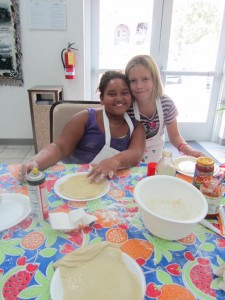
There you have it! Join us on Monday, August 19, 2013 at 6:00 PM Central for the first session of Make a Difference Mondays, where you can learn how to make positive differences in the lives of youth just like this!
Contact your local extension office for more information or go to: https://nwdistrict.ifas.ufl.edu/4hn/make-a-difference-mondays/
by Whitney Cherry | Aug 15, 2013
You are making a difference:
- Studies done with 4-H youth show adults in their 4-H clubs make them feel important (65%) and listen to them (64%). (Perkins & Butterfield, 1999).
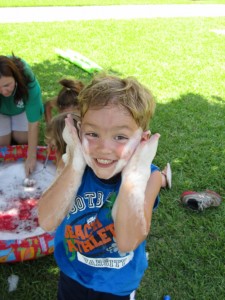
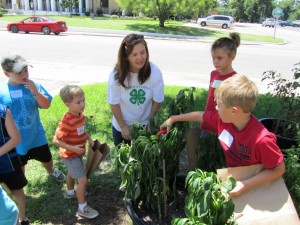
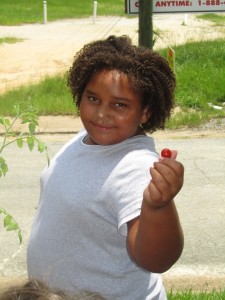
That’s all the difference in the world to child.
Join us on Monday, August 19, 2013 at 6:00 PM Central for the first session of Make a Difference Mondays, where you can learn how to make positive differences in the lives of youth just like this!
Contact your local extension office for more information or go to: https://nwdistrict.ifas.ufl.edu/4hn/make-a-difference-mondays/
by Whitney Cherry | Aug 14, 2013
The out-of-school hours constitute the biggest single block of time in the life of a young adolescent (Council on Adolescent Development, 1992).
- What are they doing with it?
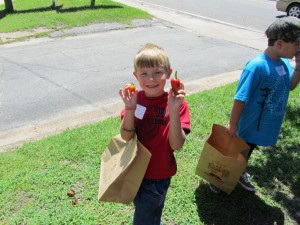
With the help of 4-H volunteers like you… anything they want!
Join us on Monday, August 19, 2013 at 6:00 PM Central for the first session of Make a Difference Mondays, where you can learn how to make positive differences in the lives of youth just like this!
Contact your local extension office for more information or go to: https://nwdistrict.ifas.ufl.edu/4hn/make-a-difference-mondays/
by Whitney Cherry | Aug 13, 2013
In 2001, Kirk Astroth and George Haynes of Montana State University published research which found the following:
Compared to other youth, 4-H youth are more likely to:
- Succeed in school, getting more A’s than other kids
- Be involved as leaders in their school and community
- Be looked up to as role models by other kids; and
- Help others in the community.
But this is the real reason we volunteer with 4-H:
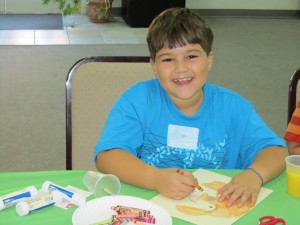
Join us on Monday, August 19, 2013 at 6:00 PM Central for the first session of Make a Difference Mondays, where you can learn how to make positive differences in the lives of youth just like this!
Contact your local extension office for more information or go to: https://nwdistrict.ifas.ufl.edu/4hn/make-a-difference-mondays/
by Whitney Cherry | Aug 12, 2013

The countodown is on to the first session of our Make a Difference Mondays Volunteer Training Series. We are just one week away from our first session! This session is going to be great for all volunteers interested in leading a 4-H club. New or experienced… you will learn things that will help you get through this 4-H year with ease! Great organizational strategies from presenters Kay Brown and Julie Dillard will help you in your quest for success! For more information on this series go to: https://nwdistrict.ifas.ufl.edu/4hn/make-a-difference-mondays/
by pmdavis | Aug 2, 2013
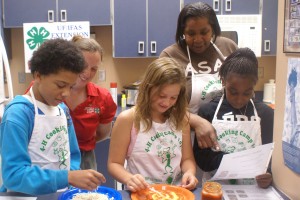 4-H and Foods, sounds pretty yummy to me! In fact cooking projects are a great example of how youth learn about foods by partnering with adults in the kitchen to plan and prepare them. Most 4-H cooking projects explore the science, nutrition and history of cooking while promoting healthy eating and resource management.
4-H and Foods, sounds pretty yummy to me! In fact cooking projects are a great example of how youth learn about foods by partnering with adults in the kitchen to plan and prepare them. Most 4-H cooking projects explore the science, nutrition and history of cooking while promoting healthy eating and resource management.
As an adult partner you will help youth learn how to select, prepare and store food items. You can help them explore the many methods of cooking, which include roasting, stir frying, grilling, barbecuing, smoking, boiling, steaming, braising and microwaving. The USDA’s MyPlate (http://www.choosemyplate.gov/) can help you to plan meals and make balanced food choices.
Remember when cooking with kids safety is first. Have supervision. Never allow youth to cook without asking for permission. Remind youth that clean is good! Keep hands and surfaces clean, if the children you work with have long hair be sure to tie it up. Also be sure that they do not have loose clothing that can catch on fire. Help youth identify and know how to safely use common tools in the kitchen including knives and other sharp objects, hot items such as broiler, toaster, stove or microwave and teach them measuring methods. Remind youth to keep hot foods hot and cold foods cold. We certainly don’t want any of those food borne illnesses coming our way.
Help youth read the directions and follow the recipes. They should check to be sure that they have all of their ingredients before beginning their cooking project. If the project requires cutting skills start simple with something soft like a banana and a plastic knife. Demonstrate the technique then have them try the actions. Teach them the following rules for working with knives.
-
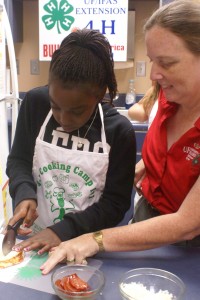
Paula and Nakobie cutting tortilla
Cut with caution.
- Focus on one task at a time.
- Never point a knife at a person.
- Always hold knife by handle.
- Use a cutting board.
- Go Slow. Take your time to learn how to cut. Beginners can start with sturdy plastic knives.
Remember to demonstrate how to wash produce and handle meat safely so you do not have cross contamination of foods. Help youth find what it is about cooking that excites them! There are recipes for snacks, side dishes, main dishes, quick breads and desserts that are great starters for youth cooking. Great projects to start with are the national 4-H Foods Curricula, or Florida Department of Agriculture Xtreme Cuisine, Nebraska 4-H has some easy kid friendly recipes or see the handout made by Bay County Extension about kid friendly foods.
by Melanie Taylor | Jul 19, 2013
From the sand to the ocean, camp to the pool, water parks to the playground – summer usually means high-energy for kids enjoying time off from school. It’s a good idea to keep on hand a stash of cooling, nutritious snacks to satisfy ferocious appetites and picky palates.
One such snack for high energy kids is called BANANA SUSHI… Sushi is a Japanese food consisting of cooked rice, combined with other ingredients, usually raw fish or other seafood. Sushi is unique based on the preparation method and how it’s rolled up and sliced into bite size pieces. This is a unique teaching opportunity to discuss the Japanese culture and its different style of foods and eating methods. When you use this recipe, explain to the kids they will be making their own fun and tasty version of Sushi using bananas.
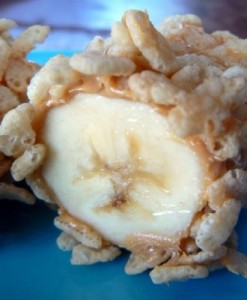
Banana Sushi
Prep Time: 5 minutes
Total Time: 5 minutes
Ingredients:
Banana, peanut butter, rice krispies cereal
Directions:
- Coat a banana with peanut butter. (For a cool treat on an especially hot day freeze the banana several hours before preparing.)
- Roll in rice krispies cereal.
- Slice into bite size pieces (like sushi).
- Eat and Enjoy!
- Encourage the kids to use chopsticks and to learn more about Japanese eating utensils.
Here are some more healthy and refreshing DIY treats that kids of all ages can prepare on their own or in group settings such as day camps and 4-H club meetings:
•Make your own trail mix with a combination of nuts, dried fruit, dark chocolate chips, and cereal pieces. Try a selection of several healthy cereals, pretzels, nuts, and crackers.
•Dried fruit – banana chips, mango, and apple, papaya, pear, or peach slices.
•Plain popcorn sprinkled with Parmesan cheese or flavorful spices.
•Baked pita or bagel chips dipped in cool, refreshing hummus.
•Skewer cubes of firm cheese (cheddar, Swiss, Monterey Jack), alternated with chunks of fresh summer fruits.
•Fresh fruit salad – Cut up apples, pineapple, bananas, oranges, and berries or any fresh, in-season fruits. Throw in dried cranberries or raisins, and sunflower seeds or slivered almonds. Top with a dollop of yogurt.
•Berry parfaits – Layer fresh berries with granola and yogurt or freshly whipped cream.
Of course, as you make theses treats with your 4-Hers be sure to incorporate the importance of their nutritional value to their daily intake based on the current MyPlate recommendation. You can find more kid-friendly information on MyPlate at http://www.choosemyplate.gov.












